Feeding “Fluffy” the Juvenile Albino Collared Kingfisher.
The rare juvenile albino Collared Kingfisher Todirhamphus chloris, at the East Coast Park was affectionately nicknamed “Fluffy” by Tuck Loong for its all white fluffed up plumage. It had become the darling and center of attention of the birding community here since its discovery by a group of otter watchers on 28 June. There were some drama early this month too. Micky Lim recounted how an overprotective lady wanted to keep the distressed kingfisher and how ACRES were called in to “rescue” it from the waters of the canal.
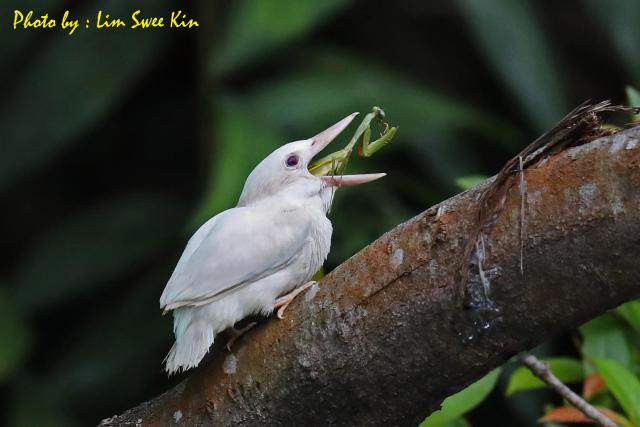
Praying Mantis “praying” for its life. An excellent moment capture by Lim Swee Kin.
With so many “food-in-mouth” photos on social media, Art Toh saw a great opportunity to compile and study the different types of prey that the parents brought back to feed the chick. Clarinda Yap’s all action BIF with FIM ( beetle larvae) cover photo summed up this story best. Many of the love, bonding and tender moments between the parents and their fledgling were captured in the photographs. This study is a great example of citizen science at work, sharing collective knowledge of our avian world.
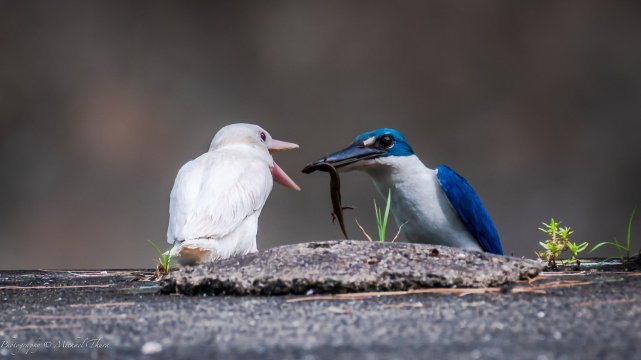
This Sun Skink made a fulfilling meal for “Fluffy”. Photo: Michael Thura
Both the parents were resourceful hunters. It seemed that everything is on the menu. They brought back no less than a dozen different types of food for the fledgling. Some were a little surprising like the swimmer crab and a centipede. Others were weird looking insects, larvae and beetles. There were photos of a long thin “snake’, caterpillars, dragonflies, a skink and a few praying mantises. Many cannot be identified.
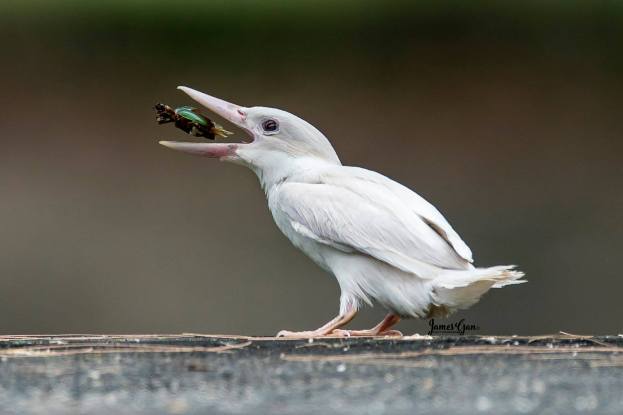
A nice juicy beetle caught floating in mid air by James Gan. Despite all the colorful diet this juvenile was not able to produce any color in its plumage.
Normal fledglings should be able to forage on its own by now. But due to its poor eyesight and weak flight, it was not able to do so. The parents had to do all the hunting. We don’t know when or if “Fluffy” will be able to survive on its own. Just hope that the parents will not abandon it and continue with the feeding until it is able to fend for itself.
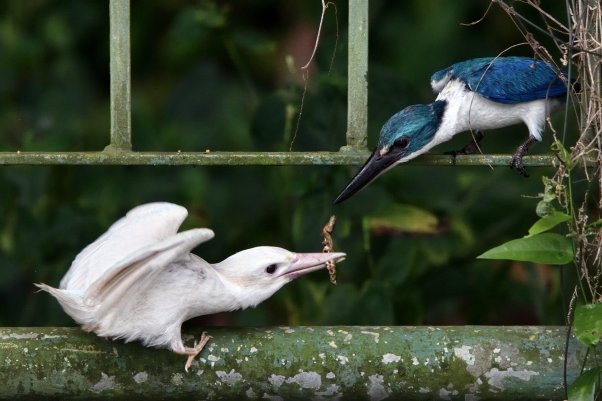
A tender moment of the parent bringing back a caterpillar for “Fluffy” captured by Tony Chua.
All these photos tell a story but more importantly they expanded our knowledge of the diet of the Collared Kingfisher chick. Unfortunately we were not able to feature all the food here but we hope you can add it your photos of the food not covered here in the comments.
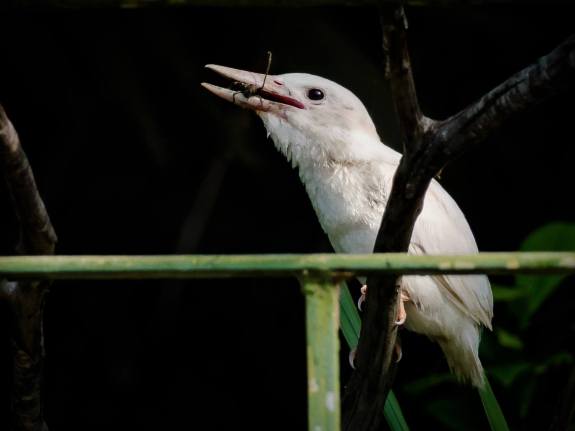
An early photos taken by Terence Tan on 28 June showing “Fluffy” with what looks like a grasshopper.
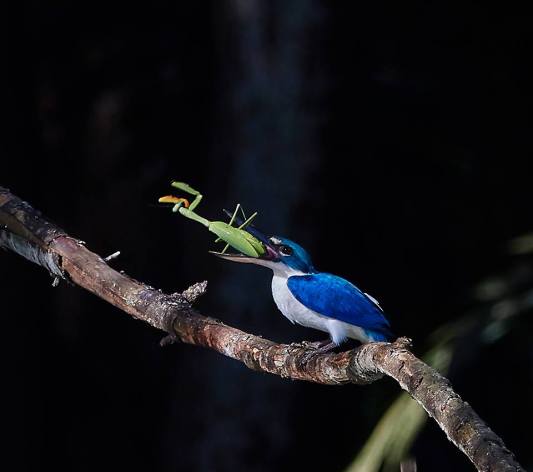
Its favourite seemed to be the Praying Mantis. Kelvin Ng’s well taken shot with the parent proudly showing off its catch.
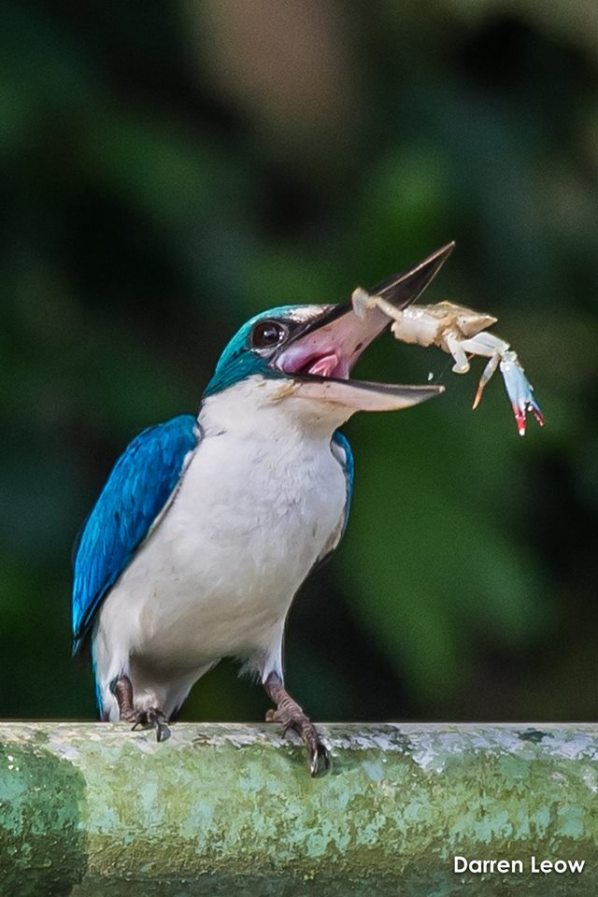
The parent tossing up a half eaten Blue Swimmer Crab was dramatically captured by Darren Leow at the perfect moment.
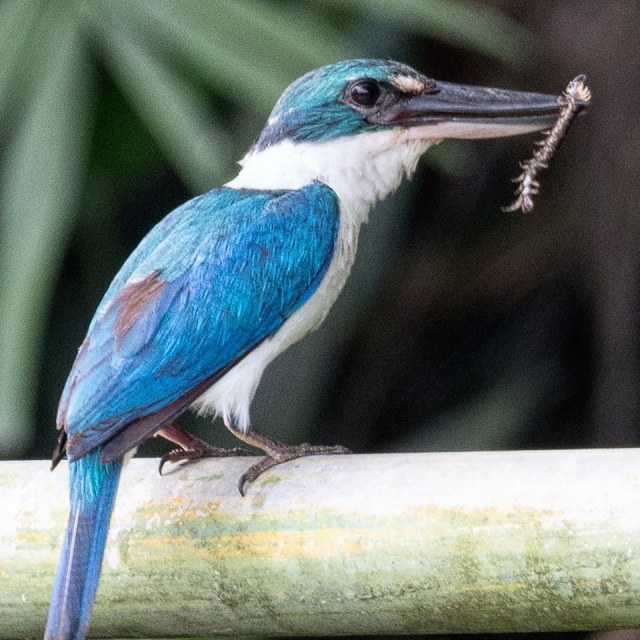
Tan Chee Huat’s clear and open shot of the parent with what looks like a centipede, a stable prey for the Long-tailed Shrike chicks.
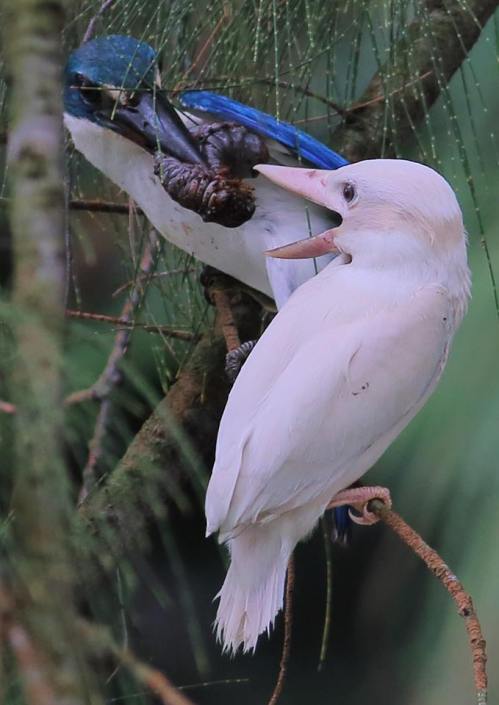
The love of the parent scarifying a juicy beetle larvae for its chick well captured in this photo by Khong Yew
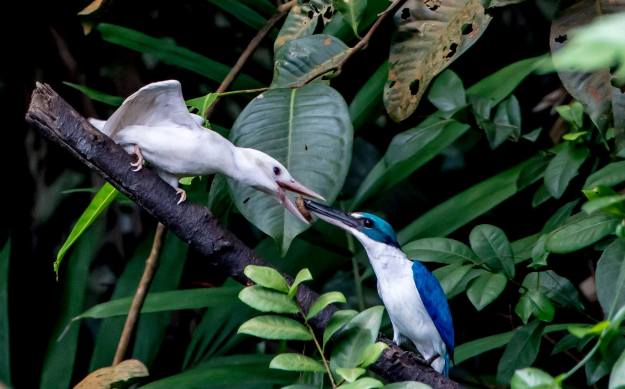
“Fluffy” stretching out to pick up a cicada from its parent. Photo by Dave Koh.
Many thanks to Clarinda Yap, Lim Swee Kin, Michael Thura, James Gan, Tony Chua, Terence Tan, Kelvin Ng, Darren Leow, Tan Chee Huat, Dave Koh and Khong Yew for the use of their photographs.
Thanks also to Lena Chow for helping to identify some of the insects and prey and Art Toh for his suggestion to document this. Please leave a comment if you know any of the unidentified food that were brought in.
Complied by Alan OwYong and edited by Tan Gim Cheong.

